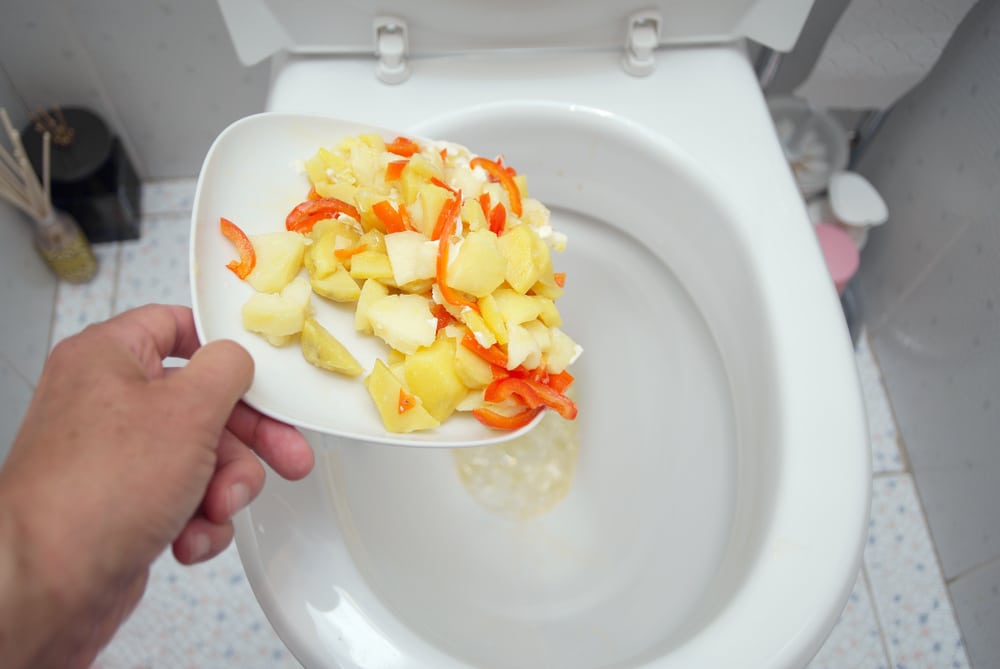Is it Permissible to Flush Food Down the Toilet?
Is it Permissible to Flush Food Down the Toilet?
Blog Article
Everyone maintains his or her own conception on the subject of Think Twice Before Flushing Food Down Your Toilet.

Introduction
Many individuals are typically faced with the predicament of what to do with food waste, particularly when it comes to leftovers or scraps. One usual inquiry that emerges is whether it's okay to flush food down the toilet. In this short article, we'll delve into the reasons that people may take into consideration purging food, the effects of doing so, and alternative approaches for appropriate disposal.
Reasons individuals could think about purging food
Lack of recognition
Some people might not recognize the prospective harm triggered by flushing food down the toilet. They might mistakenly believe that it's a harmless technique.
Convenience
Purging food down the toilet may appear like a fast and simple remedy to throwing away unwanted scraps, specifically when there's no close-by trash bin available.
Laziness
Sometimes, individuals might just pick to flush food out of large idleness, without taking into consideration the repercussions of their actions.
Effects of flushing food down the commode
Environmental impact
Food waste that ends up in rivers can add to pollution and harm marine communities. Additionally, the water utilized to purge food can strain water sources.
Pipes issues
Flushing food can lead to clogged pipes and drains, causing costly pipes repair work and inconveniences.
Kinds of food that must not be flushed
Fibrous foods
Foods with coarse textures such as celery or corn husks can get tangled in pipes and create blockages.
Starchy foods
Starchy foods like pasta and rice can absorb water and swell, resulting in obstructions in pipes.
Oils and fats
Greasy foods like bacon or cooking oils ought to never ever be purged down the toilet as they can strengthen and create clogs.
Correct disposal methods for food waste
Making use of a waste disposal unit
For homes outfitted with waste disposal unit, food scraps can be ground up and flushed with the plumbing system. However, not all foods appropriate for disposal in this manner.
Recycling
Certain food packaging materials can be reused, minimizing waste and reducing environmental effect.
Composting
Composting is an eco-friendly method to get rid of food waste. Organic products can be composted and made use of to enrich dirt for gardening.
The importance of correct waste administration
Reducing ecological injury
Proper waste administration practices, such as composting and recycling, assistance decrease contamination and protect natural resources for future generations.
Safeguarding pipes systems
By preventing the method of flushing food down the bathroom, property owners can protect against pricey plumbing repair work and maintain the stability of their plumbing systems.
Final thought
Finally, while it may be alluring to flush food down the commode for comfort, it is essential to understand the potential repercussions of this activity. By taking on appropriate waste monitoring methods and taking care of food waste properly, individuals can add to healthier plumbing systems and a cleaner setting for all.
FLUSH FOOD DOWN THE TOILET?
FLUSHING FOOD CAN CAUSE BLOCKED DRAINS IN YOUR HOME
All of the plumbing fixtures in your home are connected to the same sewer pipe outside of your home. This outdoor sewer pipe is responsible for transporting all the wastewater from your home to the Council sewer mains. Even small pieces of food that go down the kitchen sink can cause problems for your sewer. It should therefore be obvious that flushing larger bits of food, such as meat, risks a clog in either the toilet itself or the sewer pipes. Flushing greasy food is even more problematic because oil coagulates when it cools, coating the interior lining of your pipes.
THE TOILET IS NOT A BIN
Food isn’t the only thing that people shouldn’t be flushing down the toilet. People use the toilet to dispose of all kinds of things such as tampons, makeup wipes, dental floss, kitty litter and even underwear. Water goes to great lengths to educate residents about the high costs and stress placed on wastewater treatment systems simply from people flushing the wrong stuff down the toilet. It costs taxpayers millions of dollars each year, and homeowners thousands in blocked drain repairs.
FLUSHING FOOD IS A WASTE OF WATER
Flushing food is a waste of our most precious resource - water. In June this year Level 1 water restrictions were introduced to protect water supply from drought conditions. Much of New South Wales continues to be affected by prolonged drought with recent figures revealing up to 97 per cent of the state remains in drought. Depending on whether you have a single or dual flush toilet, every single flush uses between five and 11 litres of water. In the current climate this is a huge amount of water to be wasting on flushing food that should be placed in the bin (or better yet, the compost).
https://www.jabplumbingsolutions.com.au/blog/can-you-flush-food-down-the-toilet

Do you appreciate reading up on Is it safe to flush food (especially rice) down the toilet?? Put a review down the page. We would be pleased to see your responses about this blog post. In hopes that you come back again soon. If you enjoyed reading our post plz remember to share it. Kudos for being here. Come back soon.
Booking Report this page